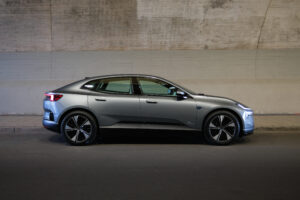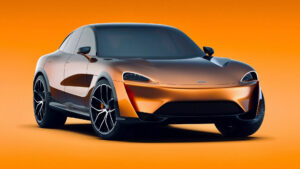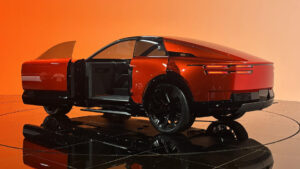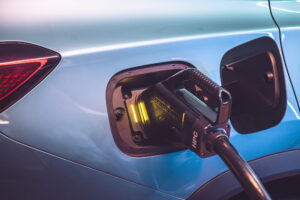Over the next six months, I’m living with a 2025 Genesis GV70 Signature Sport 3.5T – not for a quick test drive, but to understand what it’s really like as a daily companion for a family man.
So often our motoring reviews are limited to what are fleeting impressions, so I thought I’d take this opportunity to write a journal of sorts, sharing my ongoing thoughts, quirks and frustrations, those that only begin to surface once the shine has worn off.
My goal here is to go beyond the specs and drivability to ponder the liveability – to focus on the details that matter if you’re considering buying a Genesis GV70.
Model: Genesis GV70 Signature Sport 3.5T
Price As Tested: $102,000
Kilometres on pickup: 9,190km
Kilometres after month one: 11,093km
Kilometres after month two: 12,593km
Kilometres after month four: 16,093km
Likes:
- 3.5T engine performance
- Lumbar support system
- Cabin, seat and interior refinement
- Panoramic Sunroof & 27-inch screen
- Matte green paint
- Free servicing!
Dislikes:
- All locking functionality
- Overzealous safety tech
- Inadequate windscreen wipers
- Gear selector placement and infotainment control placement
- Awkward boot button
- Wireless charger
Jump To:
- First Impressions Of The Genesis GV70
- Family Matters
- A Day At The Wheel
- Safety (Or Not?)
- Niggles
- Consumption & Verdict So Far
- Month Two with the Genesis GV70
- Free Servicing!
- Does Family Really Matter?
- The Locks
- Strange Happenings
- Closing Thoughts and Verdict After Month Two
- Month Three and Four with the Genesis GV70
- Final Verdict
First Impressions Of The Genesis GV70
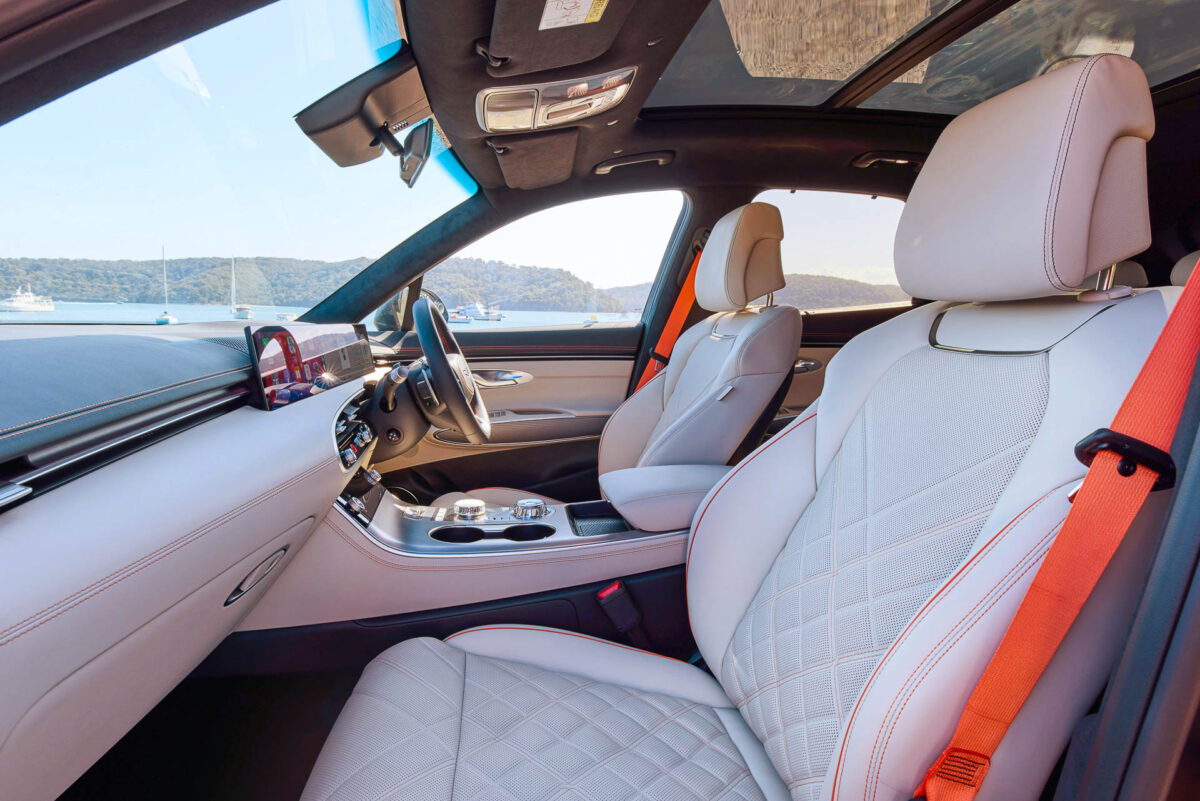
It’s been years since I was last in a Genesis. We went on the original GV70 launch and produced some paid content for them later that year, which they enjoyed, so we did the same for the G70 Shooting Brake. Climbing in this time around, the first thing that struck me was how much they’ve nailed the immediate feel, and the Storr Green Matte paint job (a $2,000 option).
I recall taking a photo of the white GV70 we had in 2021, under the harbour bridge and thinking, this is a pretty bloody good thing, but I didn’t recall the specifics until I climbed into it again. The finishing impresses straight away – brushed aluminium, a tactile gear selector with a satisfying flick, and a phone tray with wireless charging that’s both well placed and well designed, so your phone won’t slide around.
I appreciate the additional consideration for the iPhone camera too, with the charging area slightly raised in the centre so your phone sits flat. The singular infotainment and instrument cluster screen is a seamless 27-inch OLED display that looks like the cabin was designed around it, not an afterthought, which so many brands get so wrong.
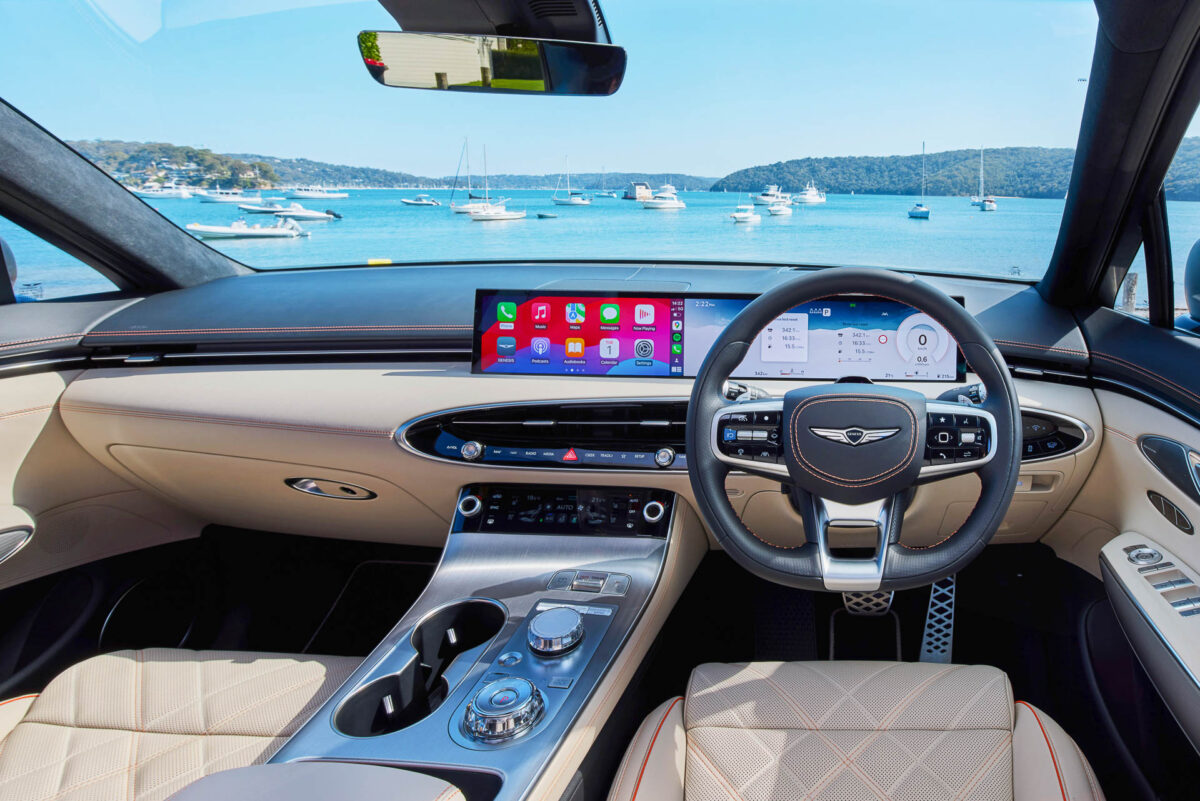
The quilted seat is gently bolstered to sit on, as it should be for a city-focused SUV, almost flat, and supremely comfortable. When you require bolstering, it’s right where you want it (and automated when you select sport mode), securing your hips and upper back. An expansive sunroof opens promptly and lets the warm winter sun fill the cabin.
Even before pressing the engine start button, I thought, “This thing feels good, and how good are these orange seatbelts!” As I pulled away from Hyundai HQ, I was impressed by the wonderfully light and graceful steering feel, which manages to still be purposeful and direct, controlled by a thick, heated wheel.
Family Matters
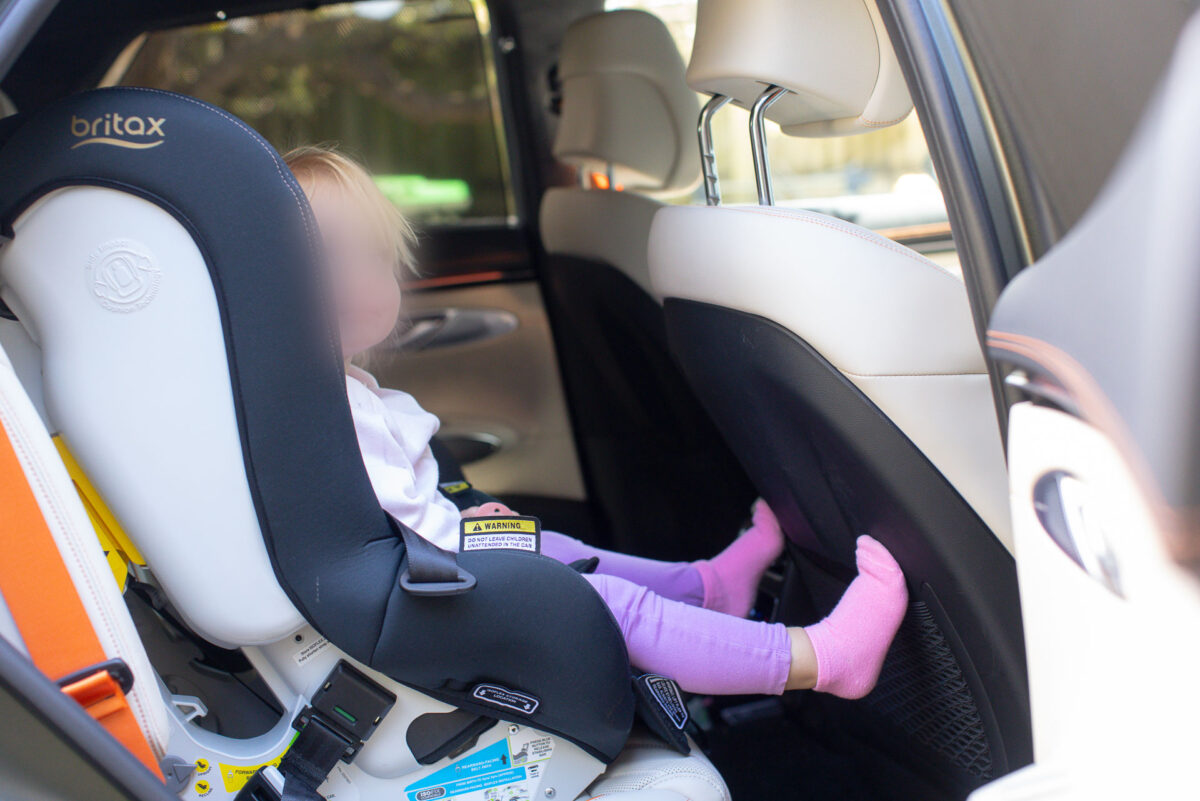
I didn’t spend a lot of time in the car the first fortnight, but my wife made a point of telling me it could be her favourite car yet, and she’s driven a lot of the cars I’ve brought home. “It drives like I’m on a cloud,” she said. She’s not wrong either, which is commendable given the 21-inch wheels.
I will say with two forward-facing baby seats in the rear, there isn’t a lot of room for driver or passenger (and I’m not tall at 5″ 9′), but that’s probably my only qualm with cabin size. Not a concern if you have older children, or none at all. I’ve deactivated the ‘Driver seat easy access’ (which moves the seat back when you turn off the engine for easy access next time you get in) because there’s no room for loading the kids with it on.
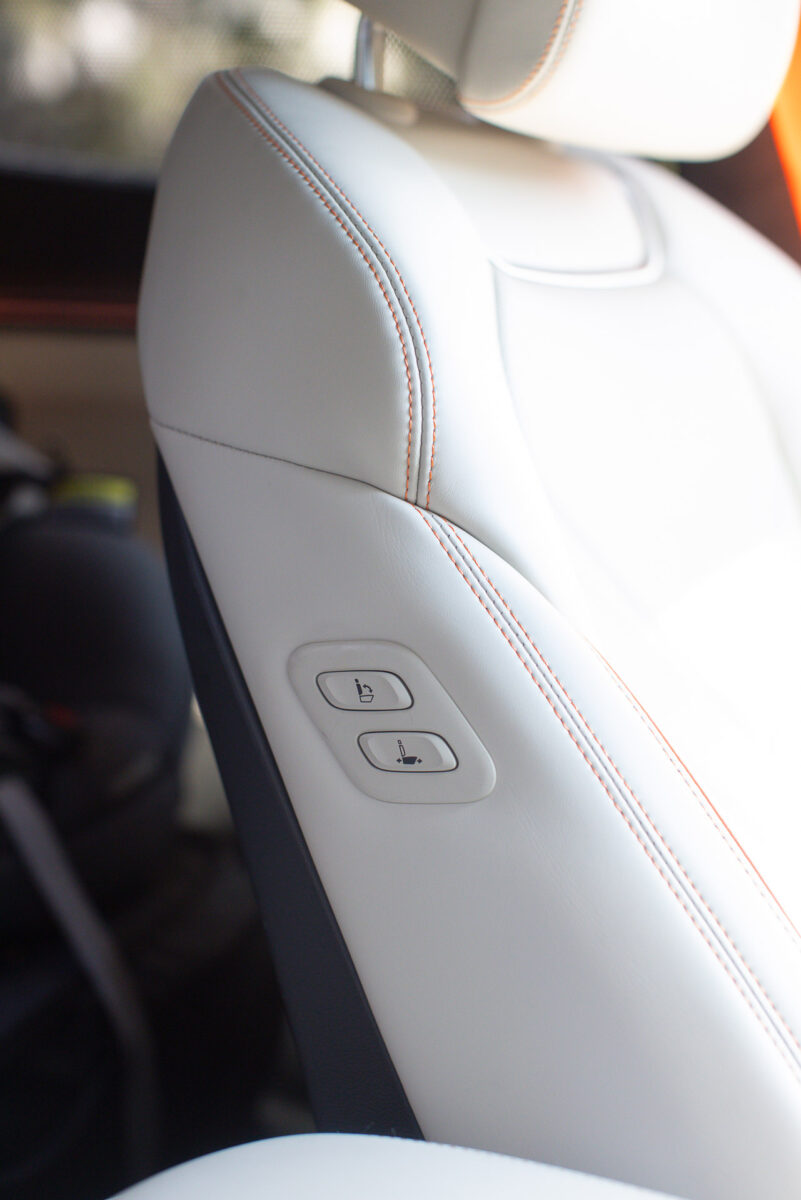
The rear, stowable sun shades are a big win, though, as are the passenger seat controls on the right-hand side of the seat back, allowing the driver to move the seat backwards and forwards without leaning over.
A Day At The Wheel
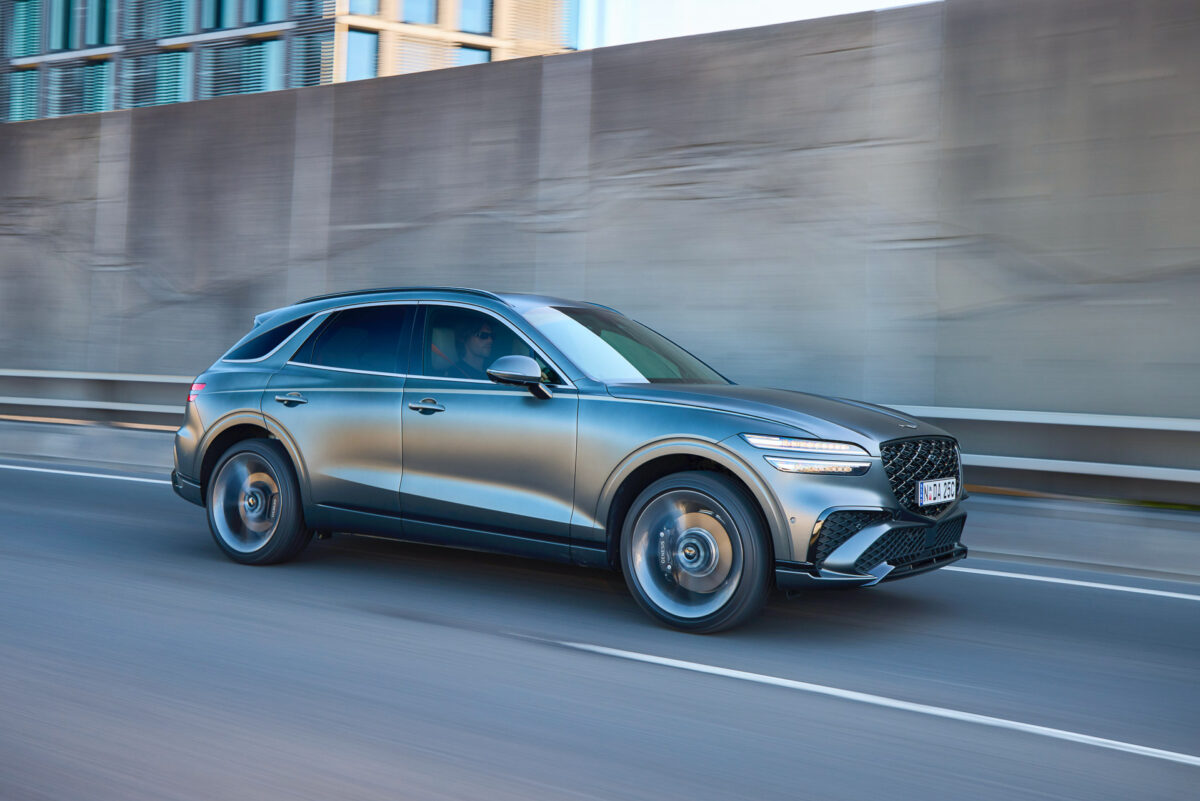
Fast forward a few weeks, and I found myself on a nine-hour haul from Sydney to the Northern Rivers in horrible weather. It must have rained for at least 7.5 out of the 9 hours I was on the road, which is a shame, because I feel like the GV70 would have been in its element, and not to say it didn’t do a great job anyway.
The 3.5T is a peach – a 3.5-litre twin-turbo V6 punching out 279kW. It’s so nice to have two extra cylinders with proper torque for effortless overtakes on the open road, while the cabin is noticeably quiet at highway speeds, even with an occasional planting of the foot. There’s a synthetic engine setting, which I had dialled up to ‘Enhanced’, but I’m longing for more exhaust note.
It was a testing drive in torrential rain, made somewhat bearable by the active lumbar support, aka Ergo-Motion seat with Smart posture assist. The car will automatically activate the ‘Comfortable stretch’ massage function for up to 20 minutes if you’ve been fidgeting in your seat for an extended period, which aims to improve comfort and alertness when fatigue creeps in. The side bolstering also engages at a certain speed, which is a nice touch, assuming performance driving, perhaps?
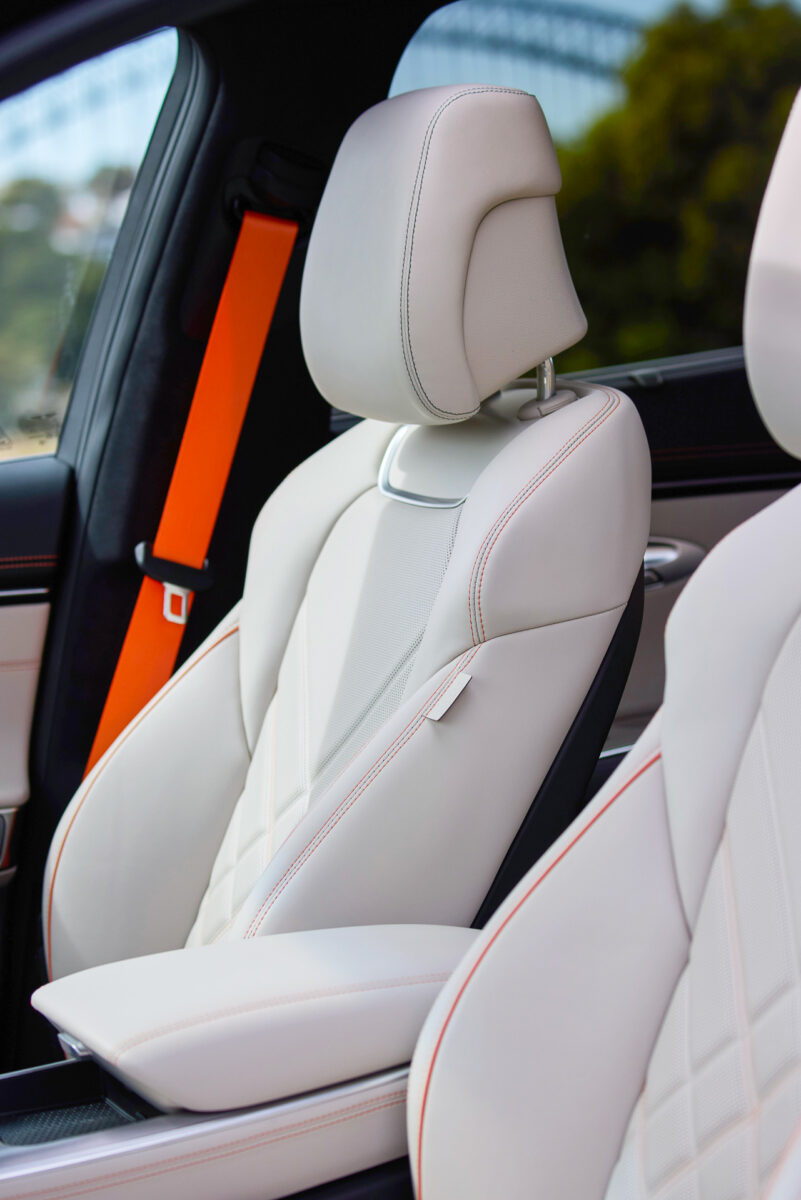
The adaptive cruise control is easy to set and customise, and I appreciate the long push for increasing or decreasing the speed in increments of 10km/h. I also enjoyed the Bang & Olufsen sound system over 5 hours of Acquired‘s ‘Rolex’ podcast, and the heated seats, which I kept at setting one.
Safety (Or Not?)
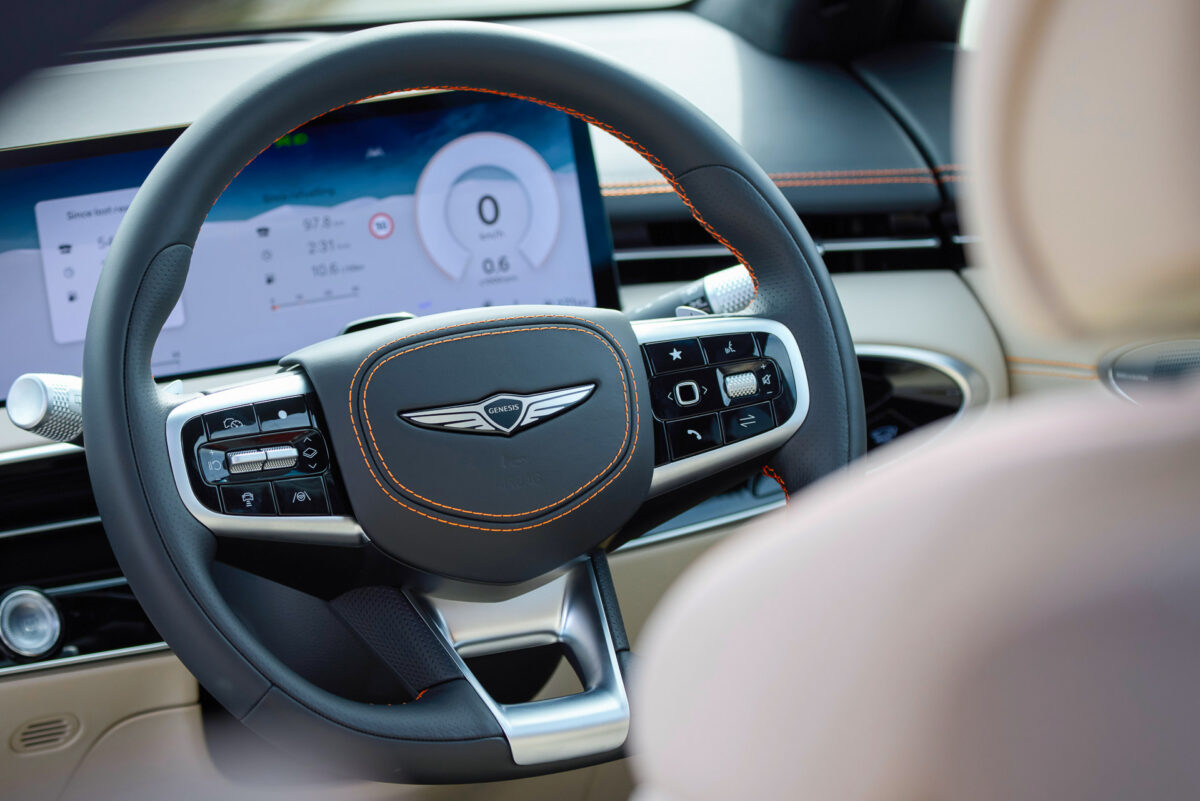
Let’s chat about safety tech, because it’s been a point of contention for me all month. As soon as I get in, I turn off the speed warning alert and the lane keep assist – every time. Both can be deactivated via buttons on the wheel, which is great, but muting the speed warning alert also mutes a call if you happen to be on one at the time, which is very annoying.
Also, the car chimes when you go into a new speed zone, despite the warning being off. You can turn it all off, but it’s a lengthy process going through the menu items, and despite having driver profiles, you cannot save these settings to your profile; it’s a manual process each time you enter the car.
For my drive north, I kept Highway Driving Assist and Blind-spot Assist on, paired with the fantastic Blind-spot View Monitor, but killed the speed, lane-keep and fatigue warnings entirely. Unfortunately, the safety kit is far from perfect – the driver fatigue system seems to trigger without rhyme or reason, often right after you’ve stopped, and the lane keep assist is worryingly intrusive at times.
Ironically, all these safety features forced upon Australian car buyers make us feel decidedly unsafe at times – sucking the enjoyment out of motoring. But that’s an industry-wide issue in pursuit of ANCAP ratings. The blind spot cameras are amazing, however, and they should be standard on all new cars.
Niggles
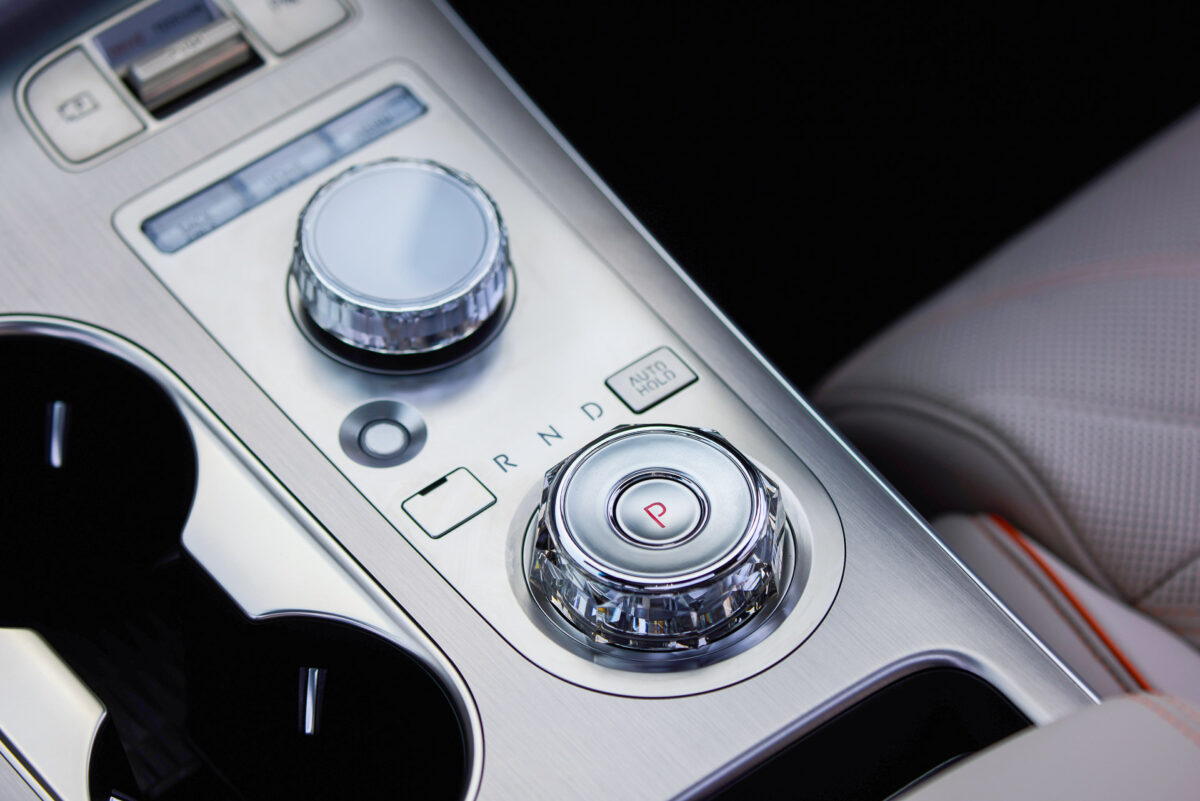
I’ll start with the windscreen wipers. In torrential rain, they just don’t keep up. There’s an auto setting, a low and a high, but full speed, they’re still too slow, to the point where I considered pulling over multiple times during my drive. Coming from a Volvo XC40, where the top wiper setting is borderline chaotic, this feels like a shortfall.
Other niggles I noticed: the central locking is slow to react to your proximity to the vehicle, it doesn’t unlock on approach, so you find yourself waiting or grabbing the handles too early before it unlocks. The boot release button, located under the rear wiper, is awkward; pushing upwards into it is unnatural.
The gear selector and infotainment selector are all similar-sized circles, so you often find yourself reaching for the wrong one when looking for reverse. Additionally, the wireless charger was also a bit of a letdown on the long drive, intermittent, overly hot, and incapable of charging my phone fully over a full day of driving.
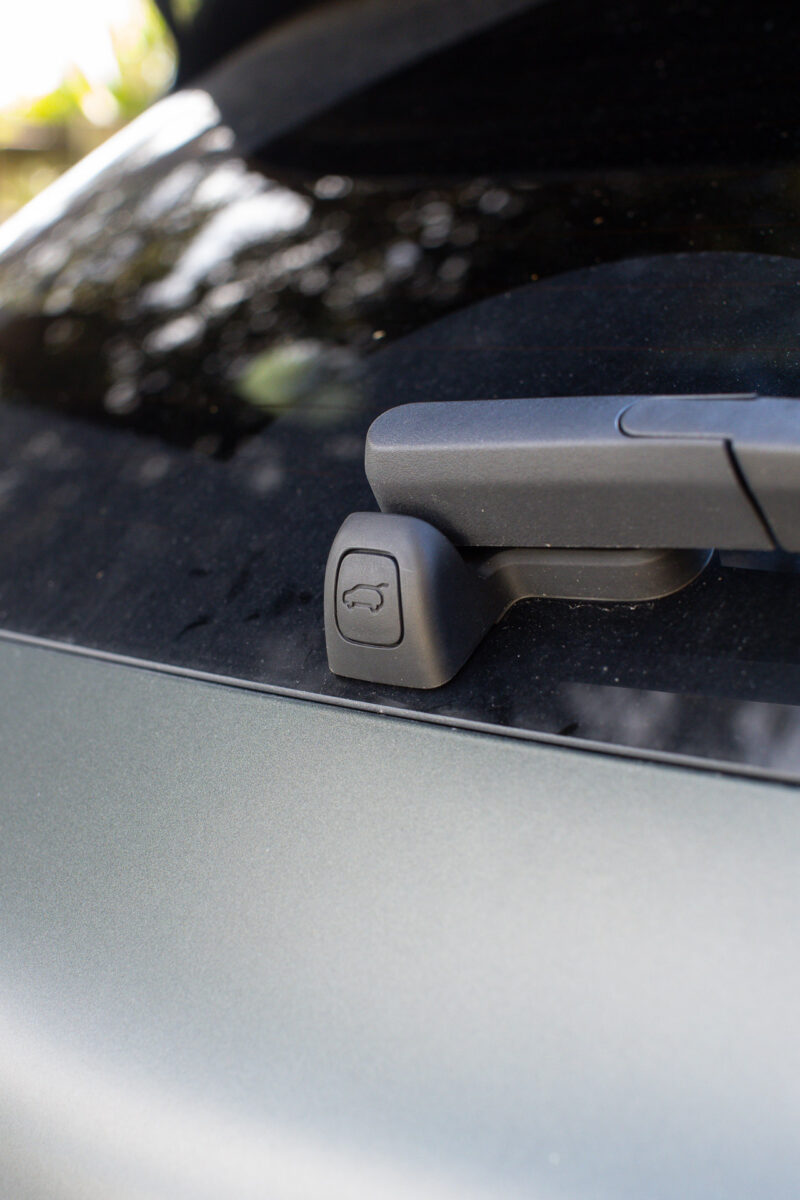
Finally, the swipe-to-skip function for media on the steering wheel is infuriating. It’s touch-activated, so you place your thumb on the central button and move it across to the right. Sometimes it changes tracks, sometimes it changes the driver display menu. Rarely does it do what I want.
Consumption & Verdict So Far
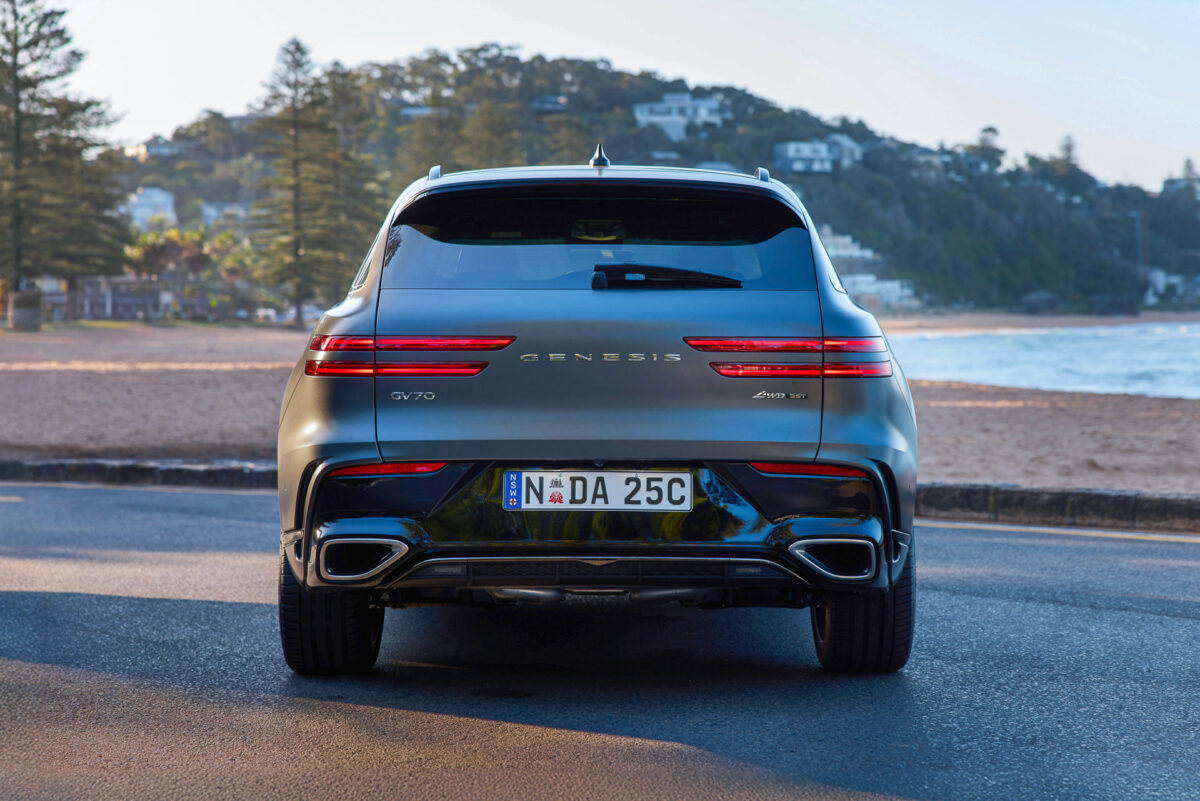
The fuel tank is a modest 66L, but I’ve found economy to be decent for a 3.5-litre turbo, dropping from 13.4 L/100 km from around town driving in Sydney to 8.9 L/100 km by the time I arrived at Cabarita. Genesis claims fuel efficiency of 11.3L/100km, which is almost smack bang in the middle of the two.
They claim 10.3L/100km for the 2.5-litre cylinder turbo, which I think in the real world would be a nominal difference in consumption. You can get into the V6 ‘Sport’ for $98,000 (an additional $8,500 over the 2.5T). Money well spent, I’d say.
There are a number of features I haven’t investigated too much, like ambient lighting and an in-car fragrance that offers two different scents – it’s set to ‘Strong’ intensity currently, but I haven’t noticed it. I have changed the scent, so I will report back next month. I also have yet to explore the remote start and parking assist functions on the key fob, which assist with parking manoeuvres.
All told, the GV70 has made a strong first impression in month one, blending luxury, comfort, and solid road manners with a few frustrations that I’ll be keeping a close eye on over the next five months. In month two, I have to take the car for its 10,000km service, which is complimentary for five years or up to 50,000km, and I will be exploring its performance in the hinterland.
Would I recommend it after one month? 100%.
Month Two with the Genesis GV70
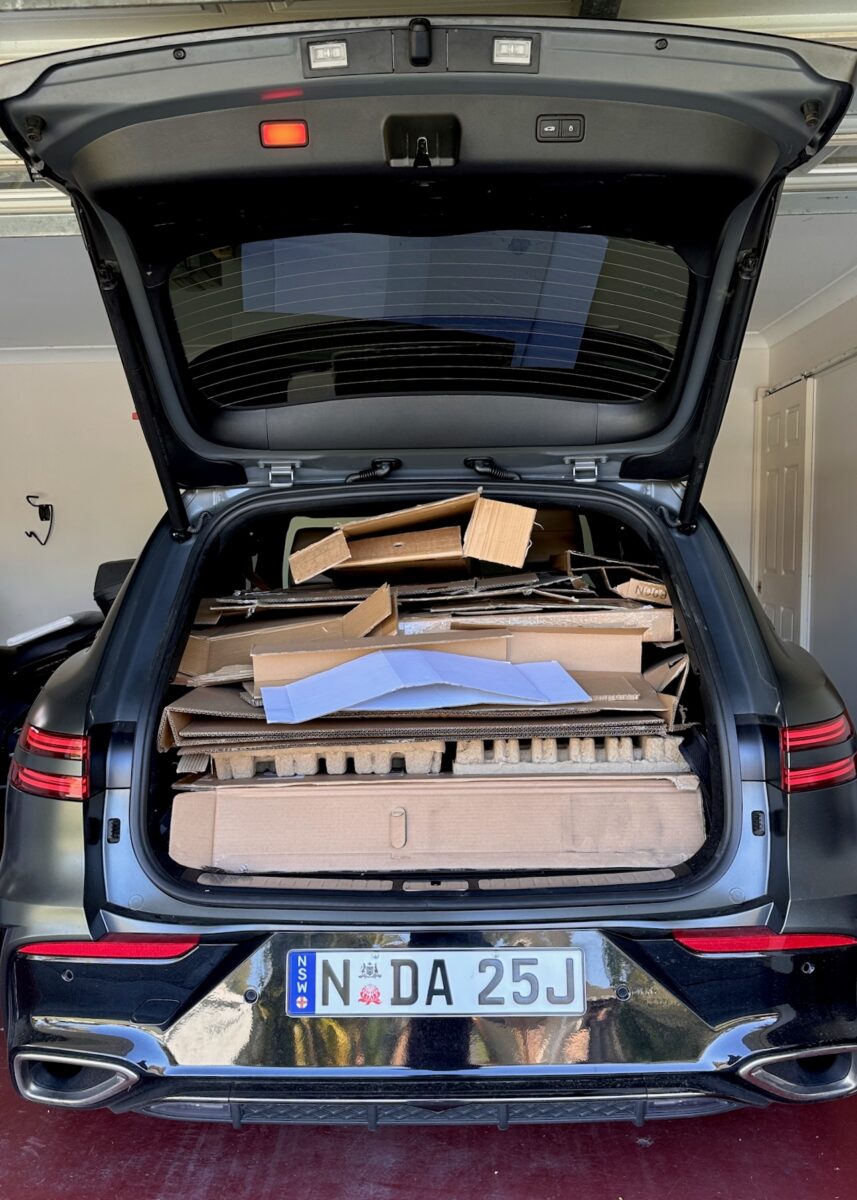
My emotions about the GV70 are mixed following my second month living with the car. On one hand I’m still in disbelief about the free servicing – literally not one cent was exchanged when I took the car in for its 10,000km service. I’m also enjoying the practicality of it, having used it to move house and also transport recycling to the tip. Plus it’s still lovely drive and exist in. On the other, I’m growing more and more frustrated by the safety tech and the constant binging (honestly it never shuts up), and have started to notice quirks that I wouldn’t be happy with had I bought it myself. Let’s dive in.
Free Servicing!
As I live and breath, an invoice for servicing with $0.00 next to ‘amount owed’. I’m still shook. For the purpose of this long term review I was happy to experience the servicing process, even if that mean’t paying for something (which I assumed I definitely would be because free is rarely free in 2025). I used the Genesis ‘Book a Service‘ webpage, and thought it was great until it took three days to get a call back.
As I’ve moved to the Northern Rivers, when I finally did get a call I was offered Tweed Heads Hyundai for the service, and told the service would take 3.5 hours. I took the car up and told them I thought the windscreen wipers were insufficient for heavy rainfall and got asked if I had them on the highest setting, classic. I was then provided a lift in a courtesy car to a local cafe so I didn’t have to sit in the bleak waiting room. As I drew nearer to my pick up time I was called to say the car wouldn’t be ready until 1pm, and then called again 45mins later to say it wouldn’t be ready until 2pm. It was 5 hours by the time I got back into the car.
The entire service was covered, and the people were nice but it wasn’t a premium experience, if that’s what you think you might be getting with a Genesis purchase. That may be different in Sydney or Melbourne but my guess is the majority of owners will be servicing their cars at the local Hyundai dealership.
Does Family Really Matter?
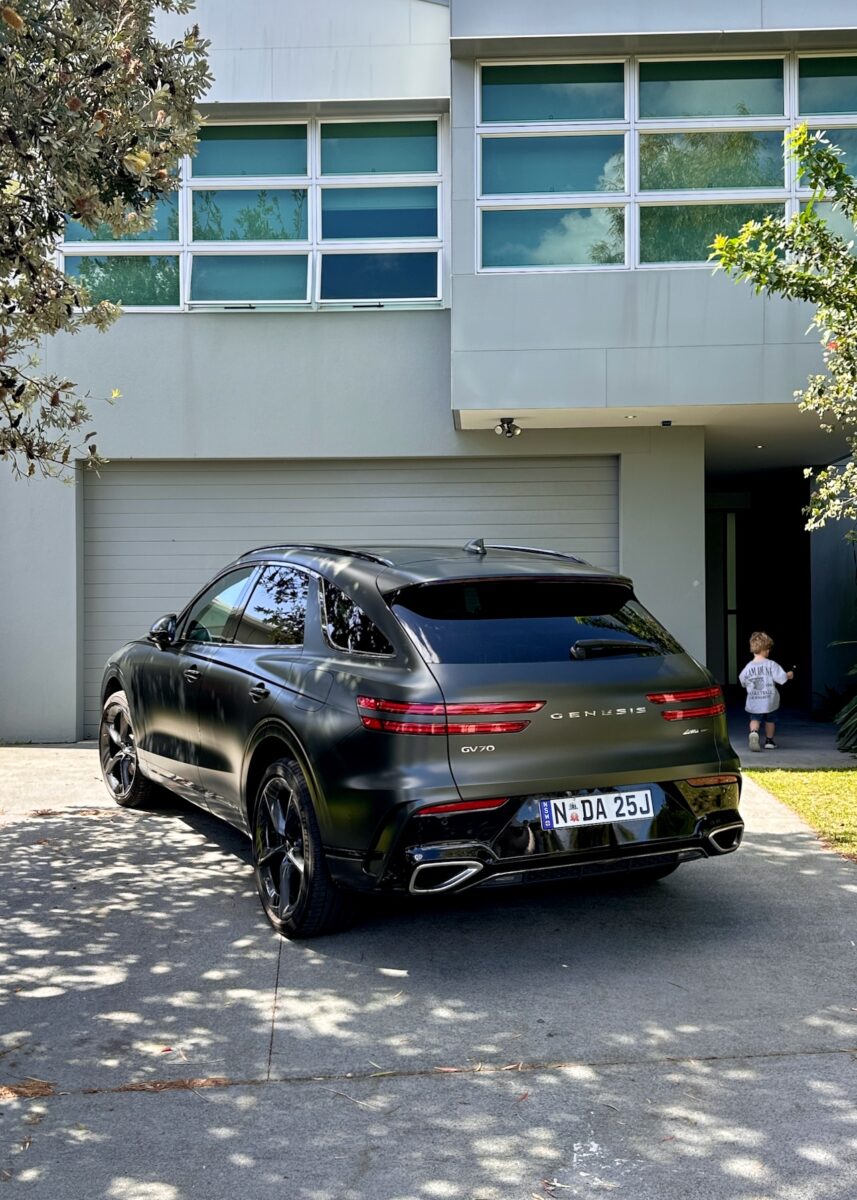
It’s been a doozy of a month on the family front and I’m left wondering how much families really matter when developing new cars. At the recent Kia Tasman launch I asked if there was a baby seat on site I could see installed in the rear seat, to assess the leg room for all passengers, and was pretty much blown off, and I get that vibe from the GV70. The rear sun shades are very good but that’s really where the positives stop for the hauling kids.
I removed the kids seats for a tip run and when I reinstalled them via ISOFIX, the right side (behind the driver’s seat) decided there was a passenger in the seat not wearing a seatbelt, so it began chiming relentlessly (even though it hadn’t in month one). After plugging in the seatbelt, the middle seat then began chiming with the children’s bags on the seat so it’s now left plugged in also. Browsing through the GV70’s manuals and infotainment system there appears to be no documented override, setting, or menu option that allows you to disable the rear seatbelt chime. That is understandable but this is a car so over engineered in safety tech missing what would be a very practical ‘Child Seat’ mode that turned off the rear seat belt alerts AND, here’s an idea… disabled the rear locks.
Such a mode would have avoided the total panic of my 3.5 year old locking himself and his 2.5 year old sister in the car, with the keys in the vehicle. As this is a press vehicle we only have one key, not that it mattered as my wife’s bag and phone were both in the car so there was no one to call to fetch the second key if we’d had one. With little hands being able to reach the lock button when clipped in, it only takes the second between closing the rear door and opening the drivers door to get in a pickle. After plenty of yelling and tears, my wife convinced him to unlock the door, having learned a very frightening lesson.
The Locks
Continuing my frustrations, when you’re carrying a child and multiple backpacks you want the proximity locking feature to be seamless – to recognise you are next to the car and unlock the car, the whole car. Both Porsche and Volvo have gotten this right – approach the car, it unlocks before you arrive at the door and you open the door. I will approach the boot and press the button and it has to stop and think about opening while you wait, once you stash the groceries and kids stuff, you walk to the drivers door and it’s locked. Press the button on the handle and it makes a noise like it’s unlocking but doesn’t, repeat three times and it finally unlocks.
This repetition of pressing the button to activate the lock is frequent and highly frustrating, regardless of how you approach the car – boot or driver’s door. Sometimes it unlocks, other times it requires numerous attempts with the lock mechanism firing but the car not unlocking. On more than one occasion I have unlocked the car from my kitchen, left the key on the bench and walked to the garage to fetch something from the car and it has locked again, forcing me to return to get the key and unlock it again. Finally it doesn’t auto lock when you walk away with the key fob, which is just daft. Annoyingly it all seems to be affected by whether you’re handling the fob or it’s in your pocket. If it’s in your pocket with other items it is very finicky, like the sensors fail to recognise it.
In short, the GV70 the proximity function works erratically and it is without doubt, the most frustrating part of living with it, which is bizarre given this is a tech-forward product. It needs a total rethink. I’ve reverted to using the key fob only.
Strange Happenings
I don’t think the wireless charger works. It just heats your phone up to a point you need a fire retardant glove to pick it up, after sucking battery from it I might add. There’s a new chime which now sounds sometimes when you open the door to get out of the car, it’s not the phone left in the tray, or the rear occupant alert – I’m yet to work it out but also try not to pay attention anymore.
On the way home from dinner last week the air conditioning went awol. It began turning itself up to the highest fan setting and down to ice cold and blasting us. When I turned it off it would turn itself back on again, go back to the same settings and start blasting us with cold air again. This went on for 15mins until we got home and turned the car off. Fortunately it hasn’t happened again but I’d be on the phone to the dealer if it was mine.
Also, despite having set up my profile, whenever my wife and I get into the car together the CarPlay always connects to her phone. I’ve tried re-ordering and deleting a re-connecting but the car always choses her phone. Going back through the menu items, into phone connections, then selecting my phone is just another thing to add to the long list of deactivating speed warnings and lane keep assist, every time I start the car.
Closing Thoughts and Verdict After Month Two
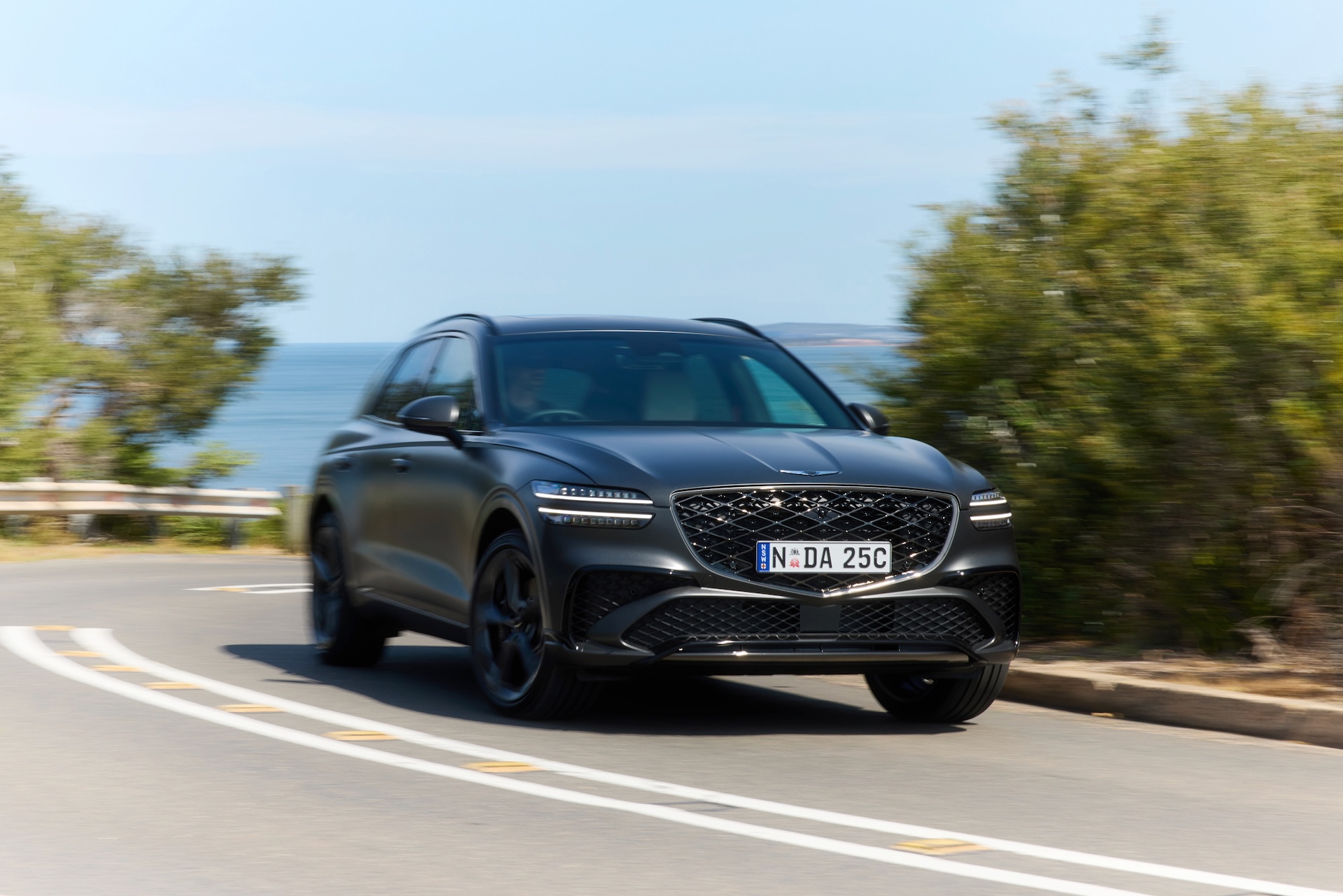
Coming home from the tip, I had a quick squirt in Sports Mode and thoroughly enjoyed it. The shift from third into fourth at 5500rpm is delightful and the composure into and through corners is impressive. It failed to shift down at one point but I can forgive that given it’s a family SUV, and a spritely performer at that. I still love the paint – in the sun the green glimmers and in the shade it could be mistaken for black, and we’re averaging between 20-25 litres of fuel a week which is more than manageable in terms of running costs (especially if you factor in not having to pay for servicing). Ultimately, it’s a great car getting letting down by arbitrary and completely resolvable – in most cases software – issues.
I said I’d let you know about the in cabin fragrance – well the car doesn’t smell bad but it certainly doesn’t have a distinct scent so I wouldn’t call it a standout feature, more a nice to have. I haven’t used the remote start yet. Will investigate in the coming month.
Would I recommend it after month two? I’m not sure how seamless locking and unlocking of the vehicle has been overlooked by the manufacturer, and it’s functionality has a huge impact on daily liveability. If you’re happy to use the key fob at all times then yes, if you want handsfree unlocking then no, the GV70 will do your head in.
Month Three and Four with the Genesis GV70
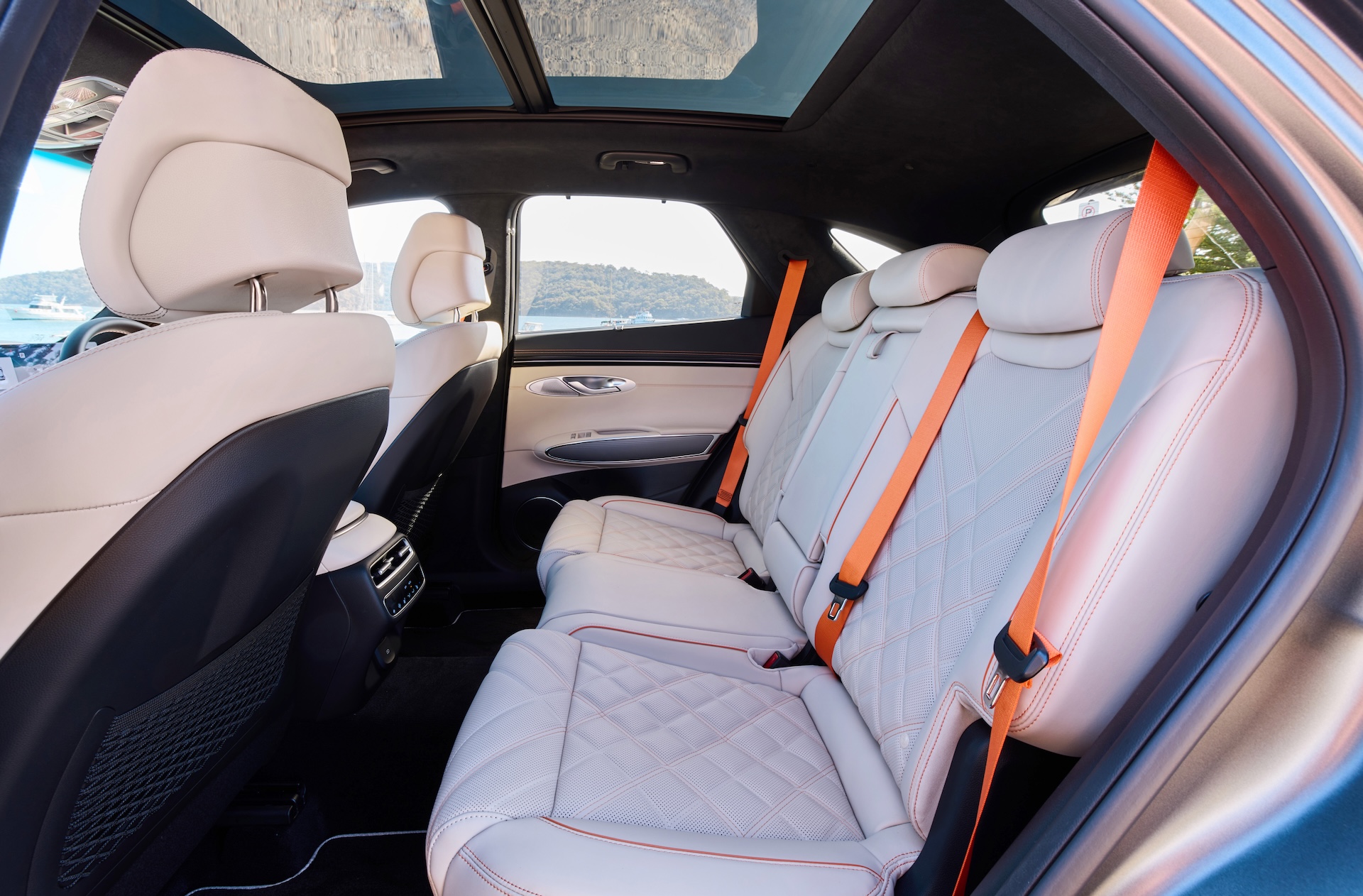
I decided not to review the car in month three because my feelings about it hadn’t changed from month two. After month four all I can say is I wanted to love this car, because it deserves to be loved, but I don’t.
It’s crazy to think a car’s locking functionality can have such a big impact on user experience but in this case, it’s detrimental. On the highway, with all the warnings turned off, in sport mode with the seat bolstered the Genesis GV70 is at its best. But driving it daily, as a family man, is beyond frustrating, bordering on plain dangerous.
I’ve been making voice notes along the way and listening back to them is both humorous and unbelievable. Shortly into month three, I left the key fob in the cup holder when I was putting petrol in the car, with my two children inside. By the time I got back to the driver’s door to retrieve my phone the door was locked. The children’s doors were also locked. Fortunately, my wife was also in the car, but had she not been I can’t imagine the panic.
Weeks later, between shutting the driver’s door and reaching for the rear passenger door to retrieve my son, the car locked itself again. Fortunately, my wife was once again inside. You cannot leave the key fob in this car, ever. The craziest part about it is that I opted to turn on the rear passenger alert hoping it might stop the locking nonsense but it’s just another sound bonging at you to finish your trip.
Most recently, we noticed the sound of a marble or similar tapping a hard surface every time we braked or went around a corner. After pulling the carseats out and inspecting every crevice I moved the driver’s seat forwards to discover a hole in the carpet the air conditioning vent comes out of. Strangely there is no ridge to stop things rolling on the rear passenger floor forwards into the unreachable abyss.
Anything could be kicked from the rear or fall down the side of your seat, children’s toys, coins, jewellery, food, whatever and be lost into the cavity between the carpet and chassis. Now we have something (definitely one of my son’s marbles) that rolls and clangs every time you brake or go around a corner which I can’t be bothered going to Tweed Hyundai to have fished out. Add it to the constant noise emitted from the vehicle and you’ve got a rather anxiety inducing drive.
Finally, the rear impact collision alert restricts you from crawling out of a carspot in reverse if it senses a car anywhere near so you have to wait until there’s nothing on the horizon. Sure it has the right idea but again the execution is not realistic, I want to get the rear of the car out so the traffic will slow to allow me out but you can’t.
Final Verdict
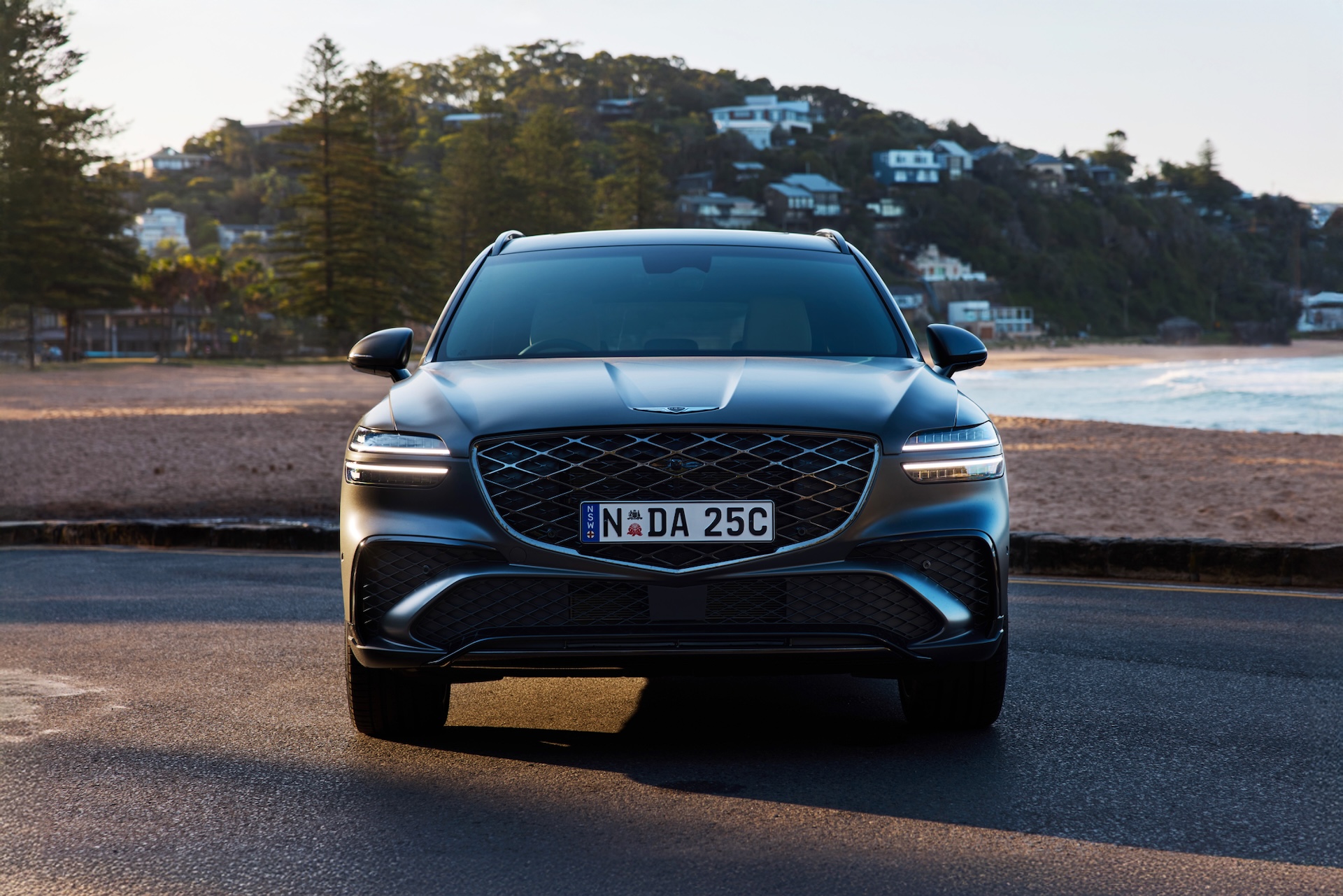
I would say the locking function on this car isn’t just terrible, it’s bordering on recall worthy. To think a child or in my case two, could be locked in the car between a parent shutting the front door and opening the rear is scary. What makes it even more frustrating is you can walk away from the car for half an hour having forgotten to lock it and it’ll still be open when you get back. So when you want it to lock it doesn’t and when you don’t want it to lock it does.
My feelings towards the GV70 won’t change in month five so it will be returned with no further edits to this review. I will close by saying this is a fantastic vehicle paired with arguably the best perk of them all in free servicing, marred by overzealous safety tech and the worst locking functionality I’ve ever encountered on a car. It’s a damn shame.
Would I recommend it after four months. Unfortunately not. While it has been a joy to drive at times, it has caused me an incredible amount of frustration and anxiety. I hope Genesis has addressed the locking and key fob issues for their 2026 vehicles and I implore you to really test the locking functionality prior to buying one.










